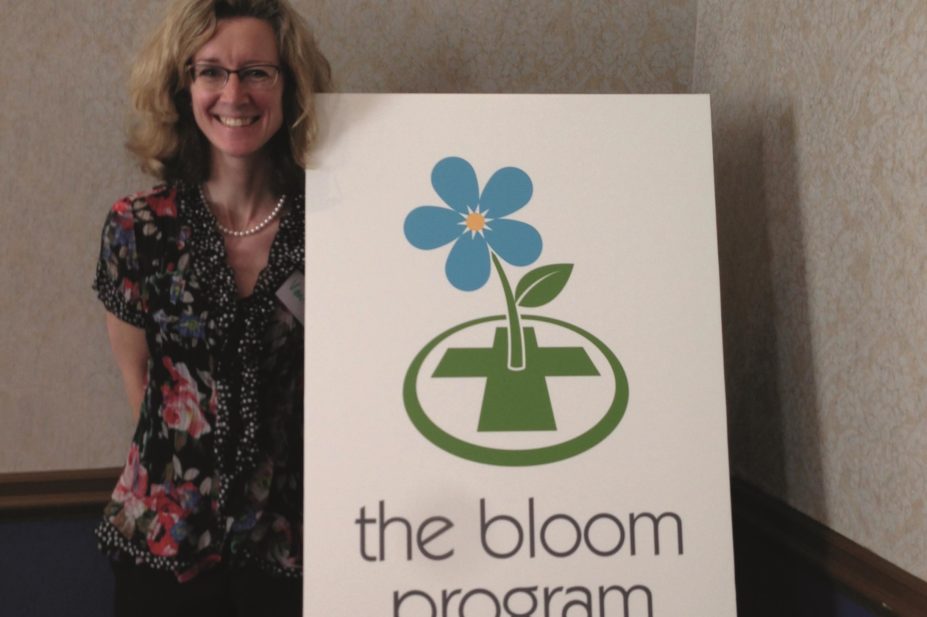
Vanessa Sherwood graduated from Brighton Polytechnic in 1991 and worked in community pharmacy and pharmacy journalism in the UK before moving to Canada in 2003. She still works as a pharmacist, and is coordinator of the Bloom Program at Dalhousie University in Halifax, Nova Scotia.
What is the Bloom Program?
The Bloom Program is a Canadian community pharmacy-based initiative that aims to help people of all ages living with mental health issues — including psychosis, bipolar disorder, depression, anxiety disorders, post-traumatic stress disorder, sleep-wake disorders and addictions — improve their health and well-being. Nova Scotia is the first location in the world to run the programme. The government of Nova Scotia is funding this as a demonstration project, and the forthcoming programme evaluation will determine its long-term fate. So far, 20 pharmacies are being funded as part of the pilot programme and are compensated based on patients enrolled in the programme, with 100 signed up so far. In contrast to fee-for-service, pharmacies receive a monthly stipend per patient for six months.
Bloom represents a more collaborative, community oriented and individualised approach to patient-centred management. In the long term, it aims to enhance capacity across health services to care for people living with mental illness and addictions, ultimately leading to better health outcomes, quality of life and cost savings to the healthcare system.
How did you get involved with the Bloom Program?
I was at a meeting when David Gardner — head of the programme and on the faculty at the College of Pharmacy and Department of Psychiatry at Dalhousie University — was asking if anyone knew of a pharmacist looking for some project work on a part-time basis. Learning more about the programme fired my interest professionally and on a personal level, because my dad had lived with mental illness and had been unwell most of his life. I believed a programme like Bloom was important and could make a difference to patients’ lives, as well as demonstrating the value and skills of community pharmacists. My current position was ending and so I applied to be the programme administrator.
How does it work in practice?
The first step is for a pharmacy to become eligible to offer and be compensated for the service. In doing so, a lead pharmacist has to complete a nine-step application process. The more comprehensive the application, the better the service will run. For example, lead pharmacists are expected to meet with local mental health support groups and service providers to better understand what they offer as well as their needs, and to introduce and explain the programme.
Once approved, pharmacies are eligible to enrol patients who have been diagnosed with one of the qualifying mental illnesses and have been prescribed associated medicines. The pharmacist and patient prioritise any health and medicines problems — such as adverse effects, withdrawal, non-adherence and inappropriate polytherapy — and establish communication rules. Physicians and other members of the patient’s healthcare team are then contacted.
Each patient is enrolled for six months. During this time, the patient is supported and given follow-up care and problems are communicated, solved and documented. At discharge, patients rate the outcomes of the identified problems.
What challenges have you faced in implementing the Bloom Program?
The novelty of this programme requires a tremendous communications effort to help ensure those who should know about it are well informed and that misunderstandings and miscommunications are addressed quickly. Most recently, this has included a CBC radio interview, public and professional information sessions, and multidisciplinary mental health team meetings.
While many family doctors have been supportive, we have worked hard to address misunderstandings that some held around excessive paperwork, service redundancy, and pharmacist diagnosing and prescribing. In addition, some pharmacy business organisations have opted out of the demonstration project, choosing to see if it offers a viable business case after the implementation and evaluation are complete. Funding has just been awarded to run the evaluation project, which will include both quantitative and qualitative data from all participating Bloom pharmacies.
What have been the highlights for you?
Working with David Gardner and programme co-lead Andrea Murphy and learning about so many areas of mental health pharmacy have been personal highlights. It has been great working with a small team where implementing change happens more easily than in a larger organisation. Mostly, though, I have enjoyed hearing the stories of how community pharmacists are sitting down with people and making a real difference in their lives.
The programme will demonstrate to the public that pharmacists are not just there to count tablets and pour liquids but can be relied upon to support people and their families, help navigate an increasingly complex healthcare system, and are versatile in how they support each individual.
Interview by Sasa Jankovic.


